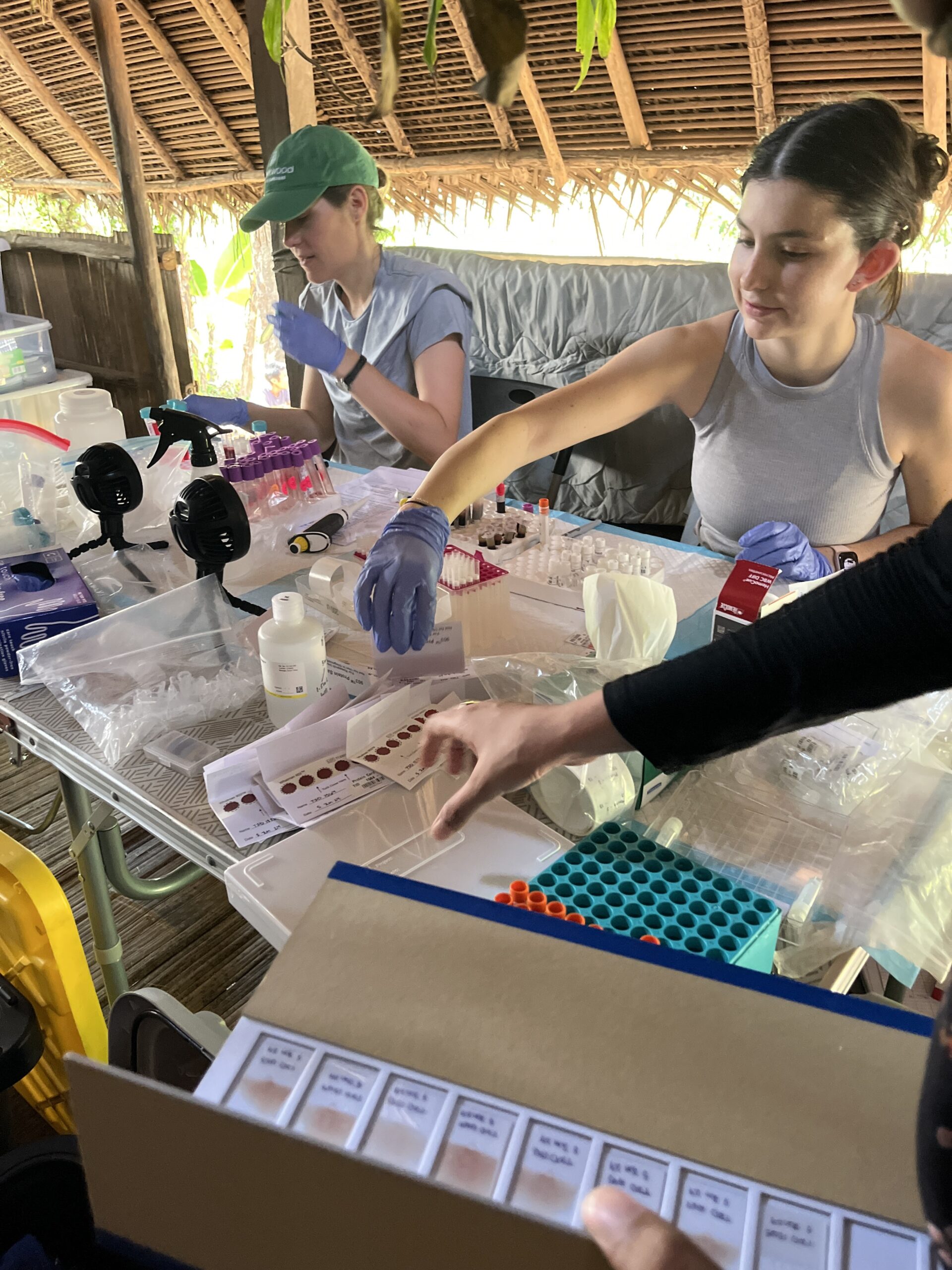Beyond the Thrifty Genotype: Examining Evolutionary Hypotheses for Modern Metabolic Health
By: Andy Flick, Evolutionary Studies Scientific Coordinator

A new review co-led by graduate students Layla Brassington and Audrey Arner of the Lea Lab discusses the formulation of the popular and impactful Thrifty Genotype Hypothesis. This hypothesis, proposed by James Neel in 1962, suggests that fat deposition and energy conservation were once useful traits in times of scarcity but are now increasing obesity-related health issues in urban, industrialized environments where food scarcity is not as common.The review discusses the evidence for this hypothesis and traces its impact to newer hypotheses at the forefront of evolutionary medicine. It also provides preliminary data from the Orang Asli Health and Lifeways study to highlight how evolutionary medicine hypotheses can be tested. The paper, “Integrating the Thrifty Genotype and Evolutionary Mismatch Hypotheses to Understand Variation in Cardiometabolic Disease Risk,” was published in the journal Evolution, Medicine and Public Health on DATE.
The team identified a few key takeaways about the Thrifty Genotype Hypothesis in their review. First, some of the main predictions of the Thrifty Genotype Hypothesis remain untested, such as the idea that certain genes were once selected for due to health-related benefits during times of scarcity. Second, the hypothesis has sparked other hypotheses within evolutionary medicine, such as the Evolutionary Mismatch Hypothesis, which is a contemporary reimagining of the Thrifty Genotype Hypothesis. Critically the Evolutionary Mismatch Hypothesis is expanded to not just include obesity, but many other lifestyle-associated diseases and mismatches between humans’ ancestral past and now.
Using data to test key predictions

Arner and Brassington are assessing key knowledge gaps in the mechanisms underlying evolutionary mismatch by working with the Orang Asli, the indigenous peoples of Peninsular Malaysia, in collaboration with the Orang Asli Health and Lifeways Project (OA HeLP), of which Dr. Amanda Lea is a co-director. To date, OA HeLP has worked with over a thousand Orang Asli individuals to explore how their evolutionary history and current lifestyles impact health. The population has a wide range of lifestyles: some rely on wage labor and live in modern environments with market foods, while others maintain traditional practices like foraging and live in bamboo houses in the rainforest. This lifestyle variation correlates with proximity to Kuala Lumpur, Malaysia’s capital city, where greater distance is linked to lower sugar intake, higher wild meat consumption, less formal education, and fewer visits to urban centers.
The team found that these lifestyle changes have mostly occurred within the last one to two generations, potentially exposing previously selected genes to new environments on short evolutionary time scales. For instance, older Orang Asli report eating much less wild meat now compared to their childhoods, reflecting rapid lifestyle shifts. Health indicators like waist circumference and body fat also vary significantly across villages, creating an opportunity to study whether traits that were beneficial in traditional settings, such as fat deposition as hypothesized by the Evolutionary Mismatch Hypothesis, increase the risk of diseases in more industrial settings.
By integrating evolutionary perspectives with anthropology, biology, and genomics, the team’s research contributes to a deeper understanding of the factors that shape cardiometabolic disease risk in diverse human populations. The work underscores the need for a more nuanced view of lifestyle change that goes beyond simple narratives and considers the complex interplay between genetics and environment.
Citation: Brassington, L., Arner, A.M., Watowich, M.M., Damstedt, J., Ng, K.S., Lim, Y.A., Venkataraman, V.V., Wallace, I.J., Kraft, T.S. and Lea, A.J., 2024. Integrating the Thrifty Genotype and Evolutionary Mismatch Hypotheses to understand variation in cardiometabolic disease risk. Evolution, Medicine, and Public Health, 12(1), pp.214-226.
Funding Statement: Support for the Orang Asli Health and Lifeways Project was provided by the National Science Foundation (BCS-2142090). A.M.A. recieved support from the NSF Graduate Research Fellowship Program as well as DGE-1937963. A.J.L. recieved support form the Searle Scholars Program, the Pew Biomedical Scholars Program, and the National Institutes of Health (R35-GM147267).
